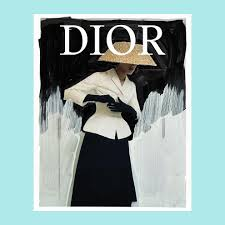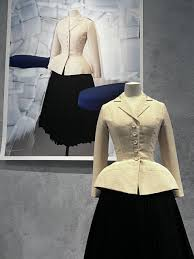Reflection on the Dior Exhibition: A Personal Perspective on Fashion and Society
Visiting the Dior exhibition at Kunstmuseum Den Haag was a truly inspiring experience for me. I believe that exhibitions like this offer more than just a glimpse into the world of high fashion—they provide an opportunity to reflect on how design, identity, and society intertwine through the lens of clothing.
One of the first things that stood out to me was the contrast between haute couture and prêt-à-porter. In my opinion, haute couture is not just about clothing—it's about artistry and dedication. These are one-of-a-kind, hand-made garments crafted with immense skill and detail. I was fascinated by the precision and effort that go into each piece. By contrast, prêt-à-porter, or ready-to-wear, felt more relatable. It’s designed for a wider audience and meant to be worn more casually, but still retains the essence of luxury and creativity. I believe that this distinction shows how fashion can operate both as an art form and as a practical expression of personal style.
What I found particularly captivating were the different aspects of Dior’s design language—especially the silhouettes and materials. Dior’s famous “New Look,” with its cinched waist and full skirt, struck me as a symbol of femininity and elegance. I think it was especially powerful in the context of post-war fashion, where such extravagance must have felt refreshing and hopeful. The materials used—like silk and organza—brought a sense of luxury and dreaminess. I also noticed the fine details, such as embroidery and structured tailoring, which made each piece feel almost like sculpture. In my opinion, these design choices reveal how fashion is both visual and tactile; it communicates through shape, texture, and movement.
As I walked through the exhibition, I couldn’t help but think about how fashion connects to identity. I believe that what we wear often reflects who we are, or who we aspire to be. Dior’s garments seemed to tell stories—not only about the women who wore them but also about the times in which they lived. For example, the strong, defined silhouettes of earlier decades contrast with the more fluid and diverse styles of today, perhaps echoing shifts in how women view themselves and their place in society. In my view, Dior’s ability to evolve while maintaining its core identity shows how fashion can honor tradition while embracing change.
Another thing that interested me was how fashion trends mirror social and cultural shifts. What I find interesting is that trends are not just random—they often reflect broader values or tensions. For instance, the rise of gender-neutral fashion today seems to align with wider conversations about gender identity and inclusivity. Similarly, I think the current preference for “quiet luxury” and sustainable fashion responds to growing concerns about consumerism and environmental impact. Dior, despite its historic status, has managed to stay relevant by responding to these themes—sometimes subtly, through design, and sometimes more overtly, through branding and communication.
In conclusion, the Dior exhibition was much more than a showcase of beautiful clothes. I believe it was a reflection of how fashion functions as a cultural artifact—something that helps us understand ourselves and our world a little better. It reminded me that behind every garment is a story: about craftsmanship, about identity, and about change. What I took away from this experience is that fashion, at its best, is both deeply personal and profoundly social.
Bibliography:
"Fédération de la Haute Couture et de la Mode. "Haute Couture".[https://www.fhcm.paris/en/haute-couture/]
Wikipedia contributors. (2023). "Haute couture". Wikipedia. [https://en.wikipedia.org/wiki/Haute\_couture]
Wikipedia contributors. (2023). "Androgyny in fashion". Wikipedia. [https://en.wikipedia.org/wiki/Androgyny\_in\_fashion]
Wikipedia contributors. (2023). "2020s in fashion". Wikipedia. [https://en.wikipedia.org/wiki/2020s\_in\_fashion]
Wikipedia contributors. (2023). "Fashion activism". Wikipedia. (https://en.wikipedia.org/wiki/Fashion_activism)
Kunstmuseum Den Haag. (2024). "Dior Exhibition Overview" (https://www.kunstmuseum.nl/en/exhibitions/dior)

